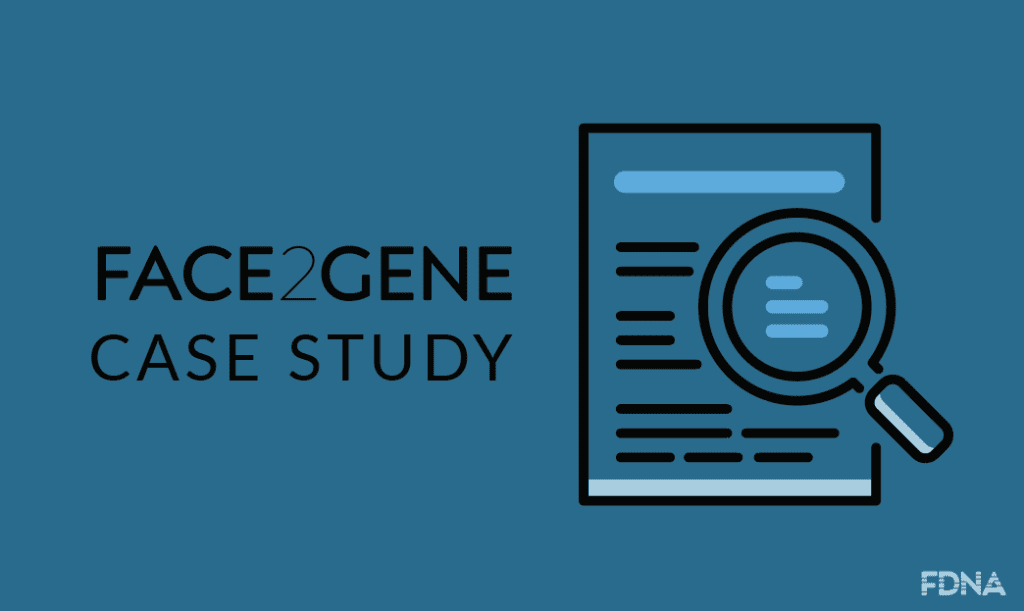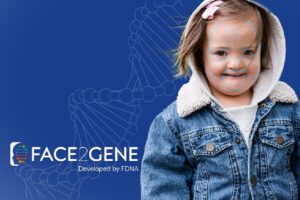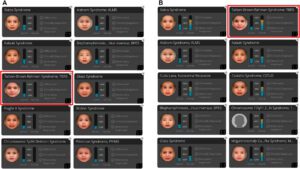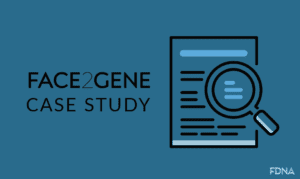In this case, Face2Gene helped Dr. Cyndy Curry by motivating targeted genetic testing for a family that had long gone undiagnosed, saving significant time and money in the process.
WHO
In this case, Face2Gene helped Dr. Cyndy Curry by motivating targeted genetic testing for a family that had long gone undiagnosed, saving significant time and money in the process.
THE DILEMMA
Dr. Curry had a patient she had followed since birth, who was originally referred for a genetics evaluation because she was thought at birth to be dysmorphic. The patient’s mother has mild to moderate intellectual disability, and she had two other daughters, both intellectually normal. When the patient was 12 years of age, the family returned to genetics after a six-year gap requesting a diagnosis.
Initially, the patient had multiple hemangiomas, which dominated her clinical phenotype. These were resolved without treatment. She also had mild generalized hypertrichosis. She walked at 18 months and combined words at 4 ½ years. She does not read and has only beginning math skills. She needs some assistance with self-help skills. She has not yet entered puberty. Her general health is good.
Prior evaluations included a normal Fragile X analysis, a normal SNP microarray, and a non-diagnostic MRI. Findings at her most recent visit included a weight at the 15th percentile and height at the 21st percentile, her head circumference was 51.75 cm, and she had a strikingly triangular face, mild hypertelorism, heavy eyebrows with synophrys, bulbous nasal tip, mild facial asymmetry and brachycephaly, low posterior hairline, poorly defined philtral ridges, overbite, high narrow palate, and a bifid uvula. Her resemblance to her mother was more obvious than in previous visits. Her mother had coarse features and a poorly defined philtrum and a thin upper lip with a widened cupids bow.
THE SOLUTION
Before proceeding with exome sequencing, Dr. Curry reviewed the patient’s case with her residents, and they entered both the patient and her mother independently into Face2Gene. In both the patient and her mother, there was a very high gestalt match for KBG syndrome. The team reviewed KBG syndrome in detail and decided, based on this match and detailed analysis of the KBG phenotype, to order single gene analysis for ANKRD11 rather than costly exome sequencing. Results confirmed a pathogenic variant in ANKRD11 (p.Arg1462Lysfs*). At the time of the disclosure of the results, the clinical team examined the patient and her mother’s teeth, as macrodontia is a characteristic feature of the syndrome. While the patient’s mother’s teeth were clearly of normal size, the patient’s teeth were borderline large and prominent due to her malocclusion. Only 69% of patients with KBG have macrodontia.
THE RESULT
The use of Face2Gene and the comparison of the mother and child’s nearly identical gestalt matches directed us to perform a single gene analysis that was diagnostic.



